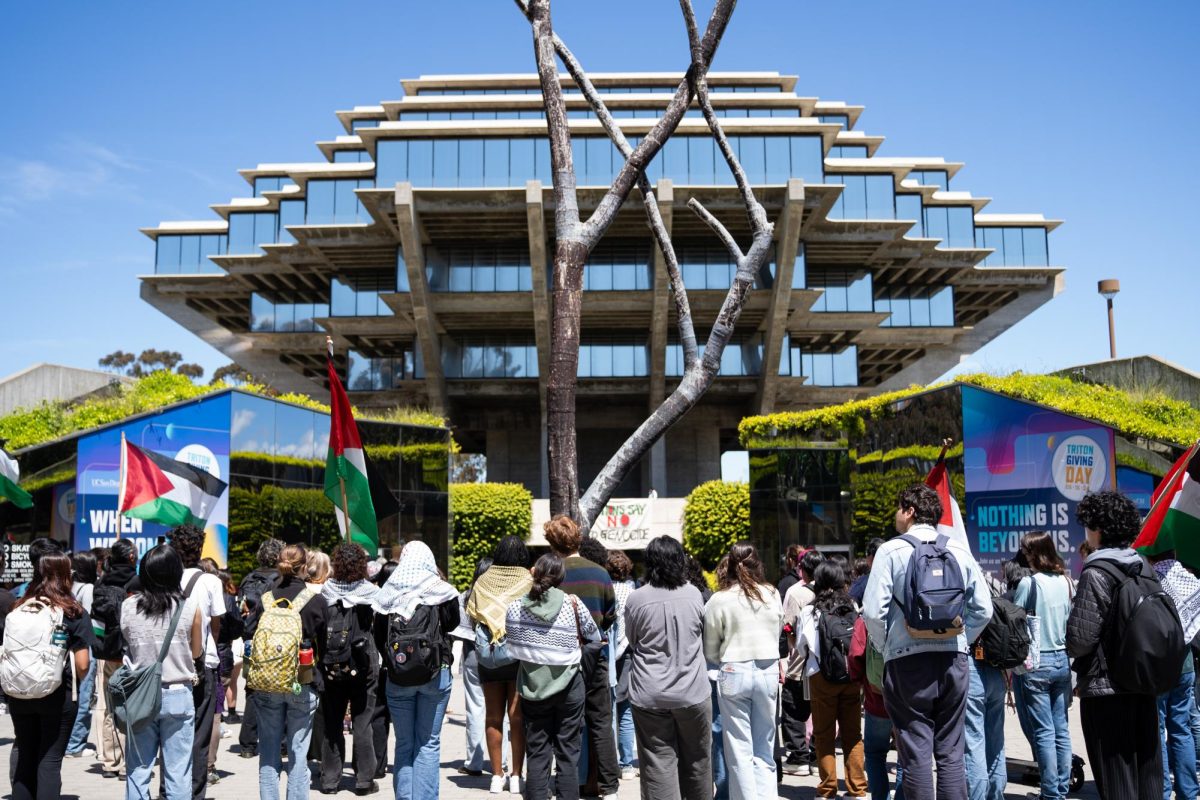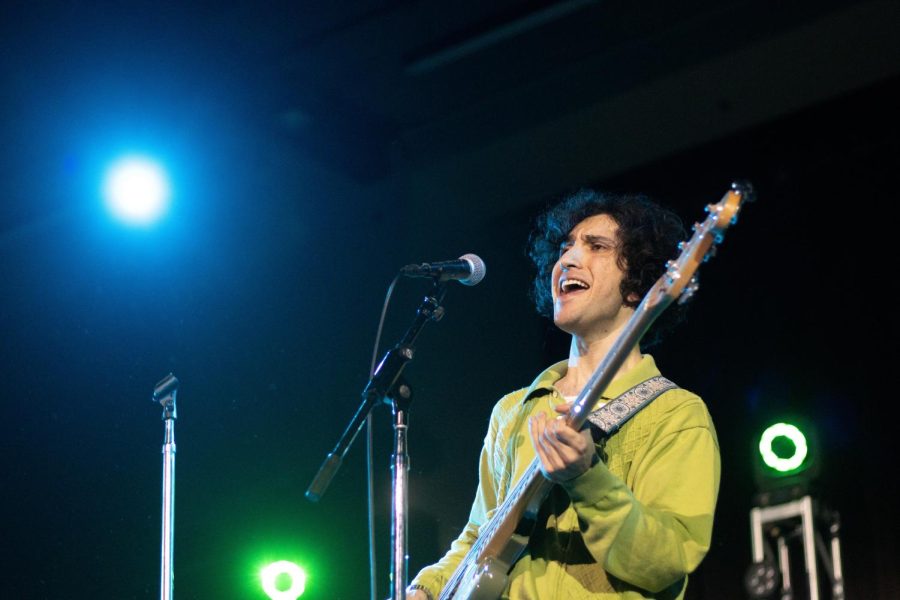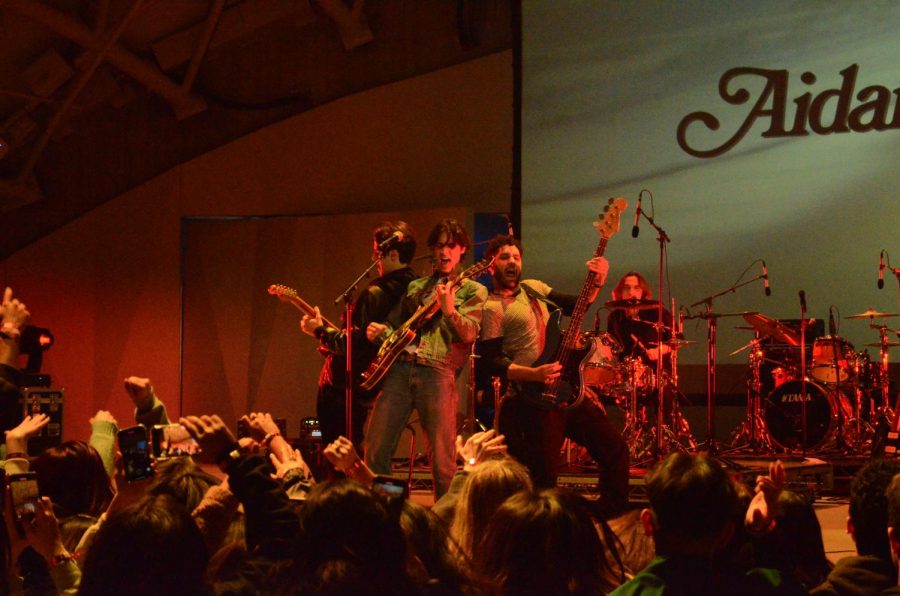As part of the 27th annual John Muir College Pumpkin Drop, the Muir College Residents’ Council will drop a 350-pound pumpkin off the 11th story of Tioga Hall on Oct. 31 at 12:30 p.m. The event will be followed by a Halloween carnival and barbecue in the Muir quad from 11 a.m. to 2 p.m.
A new feature of the event this year will be a plastic sheet marked off as a bingo grid onto which the pumpkin will be dropped. The pumpkin, which has not yet been named, will be filled with candy and a plastic bat; whoever correctly predicts the square on which the bat will land will win a prize.
The pumpkin’s “”splat”” is measured each year. The current record is held by a 398-pound pumpkin that was dropped in 1995 and splattered over 100 feet.
Engineering professor wins award for textbook
John Proakis, an adjunct professor at UCSD’s Jacobs School of Engineering, will accept the 2002 McGraw-Hill/Jacob Millman Award from the Institute of Electrical and Electronics Engineers on Nov. 9.
The award, which will be presented to Proakis during the Frontiers in Education Conference in Boston, is given each year to the author of an outstanding textbook in the electrical and computer engineering fields.
Proakis is best known for his landmark textbook “”Digital Communications,”” which was published in 1983. He also co-authored “”Digital Signal Processing”” in 1996, “”Advanced Digital Signal Processing”” in 1992, “”Digital Processing and Speech Signals”” in 1993 and “”Communications Systems Engineering”” in 2001.
Proakis joined the UCSD faculty in 1998.
Researchers explain Milky Way’s slow star creation
UCSD researchers recently discovered that the ultraviolet radiation emitted by very large, bright stars is a significant reason why the Milky Way and other galaxies produce new stars at a relatively slow pace.
Though astrologers have known for years that high turbulence keeps huge clouds of hydrogen gas from condensing into stars, not all of the causes for this instability are known. According to the UCSD study, when clouds of cold, dense gas condense into very bright stars, the ultraviolet light they emit dissipates other clouds of gas, which slows further star growth.
Alexei G. Kritsuk, a visiting researcher at UCSD, and Michael L. Norman, a UCSD physics professor and senior fellow at UCSD’s SuperComputer Center, were the authors of the study. They based their investigation on a research paper published earlier this year, which reported that large, bright stars generate sizeable amounts of ultraviolet radiation about every 10 million years. Kritsuk and Norman published their findings in Astrophysical Journal Letters.
Fields Medal winner to join math dept. faculty
Fields Medal recipient and former Yale University mathematics professor Efim Zelmanov now also holds the position of UCSD’s Rita L. Atkinson Endowed Chair in Mathematics.
Zelmanov received his Fields Medal, commonly regarded as the Nobel Prize for mathematics, in 1994 for solving the Restricted Burnside Problem. The fundamental algebraic conjecture has been worked on by mathematicians specializing in group theory throughout the 20th century.
Zelmanov has also been elected to the National Academy of Sciences, where he is the youngest member of the mathematics division. He is involved in the editorial process of over 10 major mathematics journals, including The Annals of Mathematics and The Journal of Algebra.
Zelmanov is the third Fields Medalist to join the UCSD faculty. Shing-Tung Yau won the prize in 1982 and worked at UCSD from 1984 to 1987. Michael Freedman received the Fields Medal in 1986 and was on the UCSD faculty from 1975 to 1997. Both Yau and Freedman held the same office Zelmanov now holds.
Triton Taxi to operate on Halloween
The A.S. Triton Taxi service will be operating on the evening of Oct. 31, providing registered students with a safe ride home after their Halloween festivities between 11 p.m. and 3 a.m.
Triton Taxi registration is available on the second floor of the Price Center and is free for students enrolled for fall 2002.
To use Triton Taxi call (858) 505-4991.







